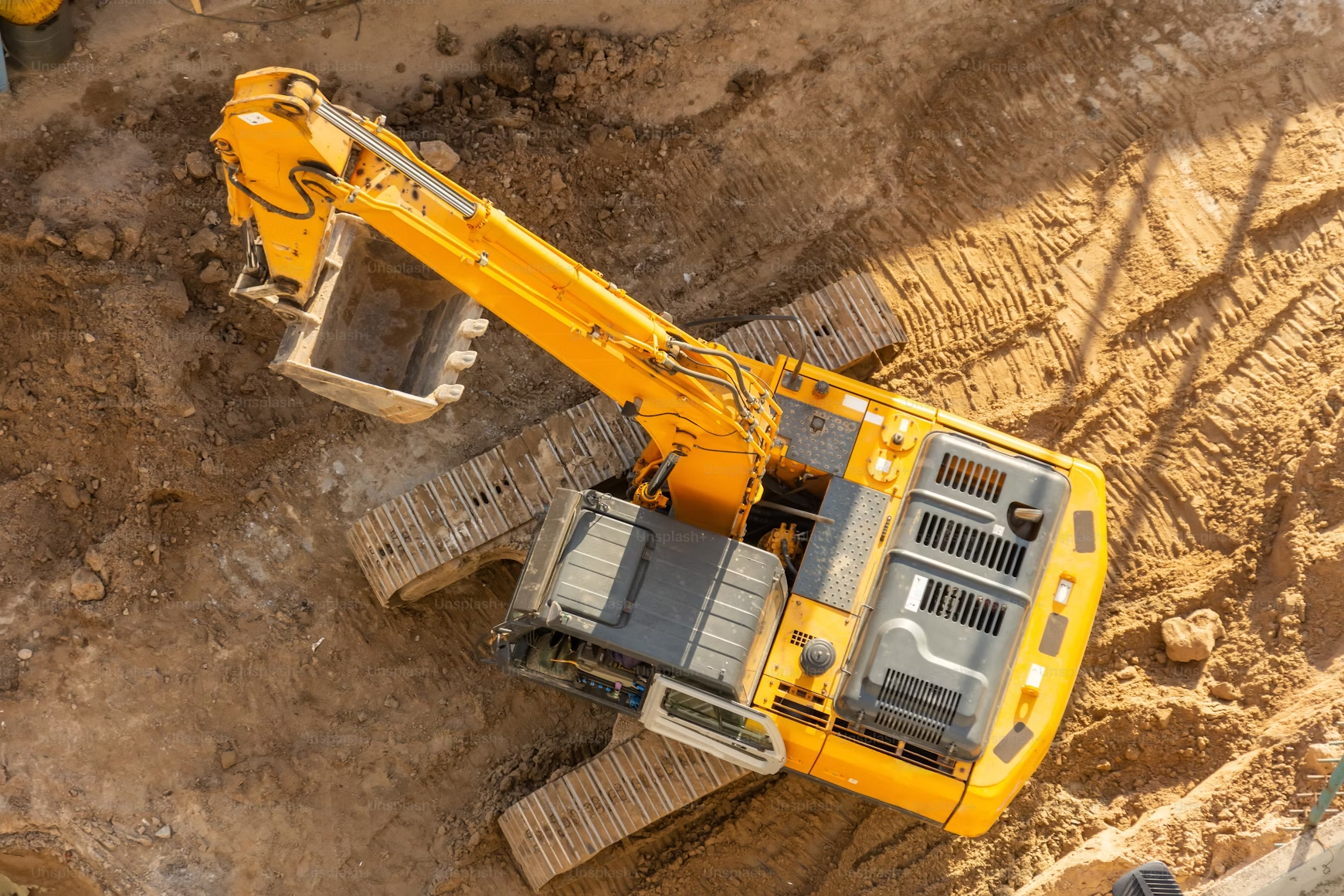Home | What are the steps in clearing the land?
Land clearing refers to the process of removing trees, vegetation, and other obstacles from a piece of land in order to prepare it for construction, agriculture, or other purposes. It is an essential step in any development project, as it creates a clean and safe space for future use. Land clearing can involve various techniques and equipment depending on the size and complexity of the project.
The importance of land clearing cannot be overstated. It not only improves safety by removing potential hazards such as dead trees or overgrown vegetation, but it also increases the value of the property by making it more attractive and usable. Additionally, land clearing allows for better land use, as it creates space for new structures, roads, or agricultural activities.
Key Takeaways
- Clearing land can provide numerous benefits, including increased property value and improved safety.
- Texas land clearing is a specialized process that requires the expertise of a professional company.
- Hiring a professional land clearing company is important to ensure the job is done safely and efficiently.
- The steps in clearing land include assessing the site, removing trees and vegetation, grading and leveling the land, and disposing of debris and waste.
- Phillips Industries is a trusted partner for all your land clearing needs.
Benefits of Clearing Land
1. Improved Safety: One of the primary benefits of land clearing is improved safety. By removing dead trees, overgrown vegetation, and other potential hazards, land clearing reduces the risk of accidents and injuries. It creates a safe environment for workers and future occupants of the property.
2. Increased Property Value: Clearing land can significantly increase the value of a property. By creating a clean and well-maintained space, land clearing enhances the aesthetics of the property, making it more attractive to potential buyers or tenants. It also allows for better land use, which can further increase its value.
3. Enhanced Aesthetics: Land clearing can transform a piece of land from a wild and overgrown area into a beautiful and well-maintained space. By removing unwanted trees and vegetation, land clearing improves the overall appearance of the property. This can be particularly important for commercial properties or residential developments where curb appeal is crucial.
4. Better Land Use: Land clearing opens up opportunities for better land use. It creates space for new structures, roads, or agricultural activities. By removing obstacles and preparing the land for development, land clearing allows for more efficient and effective use of the property.
Texas Land Clearing
Texas is a state known for its vast landscapes and diverse ecosystems. Land clearing is a common practice in Texas, as the state experiences rapid growth and development. There are several common reasons for land clearing in Texas, including:
1. Residential Development: With a growing population, there is a constant need for new residential developments in Texas. Land clearing is often necessary to prepare the land for the construction of new homes or housing complexes.
2. Commercial Development: Texas is home to many thriving industries, including oil and gas, agriculture, and technology. Land clearing is often required to make way for new commercial developments such as office buildings, warehouses, or manufacturing facilities.
3. Agriculture: Texas has a strong agricultural sector, with vast areas of land dedicated to farming and ranching. Land clearing is essential for creating space for crops or livestock and improving the productivity of agricultural operations.
4. Infrastructure Development: As Texas continues to grow, there is a need for new infrastructure such as roads, highways, and utilities. Land clearing plays a crucial role in preparing the land for these infrastructure projects.
The Importance of Hiring a Professional Land Clearing Company
While some individuals may attempt to clear land on their own, it is highly recommended to hire a professional land clearing company. There are several reasons why hiring professionals is important:
1. Safety Concerns: Land clearing can be a dangerous task, especially when dealing with large trees or dense vegetation. Professionals have the necessary training and experience to safely remove trees and vegetation without causing harm to themselves or others.
2. Equipment and Expertise: Professional land clearing companies have access to specialized equipment that allows them to efficiently and effectively clear land. They also have the expertise to assess the site and determine the best approach for clearing the land.
3. Legal Requirements: Land clearing may be subject to various legal requirements and regulations, such as obtaining permits or adhering to environmental guidelines. Professional land clearing companies are familiar with these requirements and can ensure that the land clearing process is carried out in compliance with the law.
4. Time and Cost Savings: Hiring professionals can save both time and money. They have the necessary equipment and manpower to complete the land clearing project quickly and efficiently. This allows for faster progress on the overall development project and reduces the risk of costly delays.
Steps in Clearing the Land
The process of clearing land typically involves several steps, including:
1. Site Assessment: Before starting the land clearing process, a thorough site assessment is conducted. This involves inspecting the site, identifying potential hazards, and planning for equipment and personnel.
2. Tree and Vegetation Removal: The next step is to remove trees and vegetation from the site. This can be done using various techniques such as cutting, grinding, or mulching. The goal is to clear the land of all unwanted trees and vegetation.
3. Grading and Leveling: Once the trees and vegetation have been removed, the land is graded and leveled to create a smooth and even surface. This may involve using heavy machinery to remove excess soil or fill in low areas.
4. Debris and Waste Disposal: Finally, any debris or waste generated during the land clearing process is properly disposed of. This may involve recycling materials such as wood chips or sending waste to a landfill.
Assessing the Site

Before beginning any land clearing project, it is important to conduct a thorough site assessment. This involves inspecting the site, identifying potential hazards, and planning for equipment and personnel.
During the site inspection, professionals will assess the condition of the land, including soil quality, drainage patterns, and any existing structures or utilities. They will also identify potential hazards such as unstable slopes, underground utilities, or protected species.
Based on the site assessment, professionals can develop a plan for the land clearing project. This includes determining the appropriate equipment and personnel needed, as well as any necessary permits or environmental considerations.
Removing Trees and Vegetation
The removal of trees and vegetation is a critical step in the land clearing process. There are several techniques and methods that can be used, depending on the size and type of trees and vegetation.
For larger trees, cutting them down may be necessary. This can be done using chainsaws or specialized tree removal equipment. Once the trees are cut down, they can be further processed using grinding or mulching equipment to create wood chips or mulch.
For smaller trees and vegetation, mowing or brush cutting may be sufficient. This involves using heavy-duty mowers or brush cutters to clear the land of unwanted vegetation.
Environmental considerations are also important when removing trees and vegetation. Protected species or habitats may require special permits or mitigation measures to ensure compliance with environmental regulations.
Grading and Leveling the Land
Grading and leveling the land is an important step in the land clearing process. It involves creating a smooth and even surface by removing excess soil or filling in low areas.
Grading is typically done using heavy machinery such as bulldozers or graders. These machines can remove soil from high areas and deposit it in low areas, creating a more level surface.
Leveling is often done using laser-guided equipment that ensures accuracy and precision. This allows for precise grading and leveling, resulting in a flat and even surface.
Grading and leveling are important for several reasons. They create a stable foundation for future construction or agricultural activities. They also help with drainage by ensuring that water flows away from structures or other areas of concern.
Disposing of Debris and Waste
Proper disposal of debris and waste generated during the land clearing process is essential to ensure environmental compliance and safety. There are several methods for disposing of debris and waste, including:
1. Recycling: Many materials generated during land clearing, such as wood chips or mulch, can be recycled. These materials can be used for landscaping, erosion control, or biomass energy production.
2. Landfill: Some debris and waste may need to be disposed of in a landfill. This includes materials that cannot be recycled or reused, such as concrete or asphalt.
3. Composting: Organic materials such as leaves or grass clippings can be composted and used as a soil amendment. This is an environmentally friendly way to dispose of organic waste.
It is important to follow environmental regulations and guidelines when disposing of debris and waste. This may include obtaining permits or adhering to specific disposal methods.
Phillips Industries: Your Trusted Land Clearing Partner
 When it comes to land clearing in Texas, Phillips Industries is a trusted partner. With over 30 years of experience in the industry, Phillips Industries has the expertise and equipment to handle any land clearing project.
When it comes to land clearing in Texas, Phillips Industries is a trusted partner. With over 30 years of experience in the industry, Phillips Industries has the expertise and equipment to handle any land clearing project.
Phillips Industries offers a wide range of services, including tree removal, vegetation clearing, grading and leveling, and debris disposal. Their team of professionals is highly trained and experienced in all aspects of land clearing.
Customer satisfaction is a top priority for Phillips Industries. They have received numerous positive testimonials from satisfied clients who have praised their professionalism, efficiency, and attention to detail.
Land clearing is an essential step in any development project. It improves safety, increases property value, enhances aesthetics, and allows for better land use. Hiring a professional land clearing company is important due to safety concerns, the need for specialized equipment and expertise, legal requirements, and time and cost savings.
The process of clearing land involves several steps, including site assessment, tree and vegetation removal, grading and leveling, and debris disposal. Each step requires careful planning and execution to ensure a successful land clearing project.
Phillips Industries is a trusted partner for land clearing in Texas. With their experience, expertise, and commitment to customer satisfaction, they are the go-to choice for all land clearing needs. Contact Phillips Industries today to discuss your land clearing project and experience the benefits of professional land clearing.
If you’re looking for more information on land clearing, you might find this article on Phillips Industries’ website helpful. They are a trusted company specializing in land clearing in Texas. Their expertise in this field is evident in their new website, which showcases their services and commitment to quality. To learn more about the steps involved in clearing the land, check out their informative article Land Clearing Texas.
FAQs

What is land clearing?
Land clearing is the process of removing trees, shrubs, and other vegetation from a piece of land to prepare it for other uses such as agriculture, construction, or development.
Why is land clearing necessary?
Land clearing is necessary to make land suitable for various purposes such as farming, building homes, constructing roads, and other infrastructure projects.
What are the steps involved in clearing the land?
The steps involved in clearing the land include obtaining necessary permits, surveying the land, marking the boundaries, removing trees and vegetation, grading the land, and disposing of the debris.
What equipment is used for land clearing?
Equipment used for land clearing includes bulldozers, excavators, backhoes, chainsaws, and other heavy machinery.
What are the environmental impacts of land clearing?
Land clearing can have negative environmental impacts such as soil erosion, loss of biodiversity, and habitat destruction for wildlife.
What are the safety precautions to be taken during land clearing?
Safety precautions during land clearing include wearing protective gear, ensuring proper use of equipment, and following safety guidelines to prevent accidents and injuries.
Page design by: Website Design and Marketing Near Me






